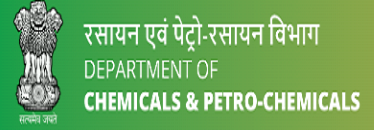Genesis and Historical Development
The history of the serious efforts to achieve chemical disarmament that culminated in the conclusion of the Chemical Weapons Convention began more than a century ago. Although toxic chemicals have been used as a method of warfare throughout the ages, it is clear from some of the earliest recorded incidents that such weapons have always been viewed as particularly abhorrent. A thorough account of the history of the negotiations of the CWC is found in Julian Perry Robinson, The negotiations on the Chemical Weapons Convention: An historical overview, in M. Bothe et al. (eds.), The New Chemical Weapons Convention: Implementation and Prospects, 17-36 (1998).
The first international agreement limiting the use of chemical weapons dates back to 1675, when France and Germany came to an agreement, signed in Strasbourg, prohibiting the use of poison bullets.
Almost exactly 200 years later, in 1874, the next treaty or agreement of this sort was concluded: the Brussels Convention on the Law and Customs of War. The Brussels Convention prohibited the employment of poison or poisoned weapons, and the use of arms, projectiles or material to cause unnecessary suffering. Before the turn of the century, a third agreement came into being; an international peace conference held in The Hague in 1899 led to the signing of an agreement that prohibited the use of projectiles filled with poison gas.
The efforts of the twentieth century were rooted in the 1899 Hague Peace Conference. The contracting parties to the 1899 Hague Conventions declared their agreement to abstain from the 'use of projectiles, the sole object of which is the diffusion of asphyxiating or deleterious gases'.Their intentions unfortunately proved futile. The rules of warfare agreed at the Hague Conference and its successor (the 1899 and 1907 Hague Regulations) prohibited the use of poisoned weapons. Nonetheless, Chemical Weapons were used on a massive scale during World War I, resulting in more than 100,000 fatalities and a million casualties.
In the wake of World War I, during which the world witnessed the horrors of large-scale chemical warfare, international efforts to ban the use of chemical weapons and prevent such suffering from being inflicted again, on soldiers and civilians, intensified. The result of this renewed global commitment was the 1925 Geneva Protocol for the Prohibition of the Use of Asphyxiating, Poisonous or Other Gases, and Bacteriological Methods of Warfare. The Geneva Protocol does not, however, prohibit the development, production or possession of chemical weapons. It only bans the use of chemical and bacteriological (biological) weapons in war. Furthermore, many countries signed the Protocol with reservations permitting them to use chemical weapons against countries that had not joined the Protocol or to respond in kind if attacked with chemical weapons. Since the Geneva Protocol has been in force, some of these States Parties have dropped their reservations and accepted an absolute ban on the use of chemical and biological weapons.
During the first half of the twentieth century many developed countries spent considerable resources on the development of Chemical Weapons, particularly after the discovery of powerful nerve gases renewed interest in the field. Chemical Weapons were used by a number of countries in the inter-war period, and all the major powers involved in World War II anticipated that large-scale chemical warfare would take place. Contrary to expectations, however, Chemical Weapons were never used in Europe in World War II. The reasons are uncertain, and historians still debate whether it was fear of retaliation in kind, the level of protection of enemy troops, or moral reasons that deterred their use. The fate of some of the stockpiles built up in anticipation of World War II is also uncertain. Many Chemical Weapons were abandoned, buried or simply dumped at sea. In any event, following World War II, and with the advent of the nuclear debate, several countries gradually came to the realisation that the marginal value of having Chemical Weapons in their arsenals was limited, while the threat posed by the availability and proliferation of such weapons made a comprehensive ban desirable.
At that time the issues of chemical and biological weapons disarmament were linked to each other. Both issues became the subject of active consideration when, in 1968, Sweden was able to include them on the agenda of the multilateral Geneva disarmament conference. (At that time, the conference was called the Eighteen Nations Disarmament Committee (ENDC), and was chaired jointly by the United States and the Soviet Union. The inclusion of chemical and biological weapons on the agenda therefore indicated the agreement of both States to begin addressing the subject.) Shortly thereafter, the negotiations on biological and Chemical Weapons issues diverged. In 1969 the United Kingdom tabled a draft biological weapons disarmament treaty. After several modifications that reduced its effectiveness, the draft Biological Weapons Convention was agreed to in the disarmament conference, and was endorsed by the United Nations General Assembly. The treaty opened for signature in 1972 and entered into force in 1975. The Biological Weapons Convention was an incremental step forward in the commitment to achieving a Chemical Weapons ban. Article IX of the Biological Weapons Convention states:
Each State Party to this Convention affirms the recognised objective of effective prohibition of Chemical Weapons and, to this end, undertakes to continue negotiations in good faith with a view to reaching early agreement on effective measures for the prohibition of their development, production and stockpiling and for their Destruction, and on appropriate measures concerning equipment and means of delivery specifically designed for the production or use of chemical agents for weapons purposes.
The issue of Chemical Weapons was therefore retained on the agenda of the Geneva Conference, and various states tabled drafts during the 1970s. This era also saw the announcement of a joint US–Soviet initiative on Chemical Weapons which was to be submitted to the Geneva Conference. A US–Soviet working group set up during this period began discussing some key ideas which eventually formed the building blocks of the CWC. These included the need to control the precursors of Chemical Weapons, to establish mechanisms such as a conference or committee of all states parties and a secretariat to oversee the implementation of the treaty, and to use routine and challenge inspections as part of the Verification regime.
In 1978, the Geneva conference (in 1980, it was renamed the Conference on Disarmament) was restructured. Its membership increased to 40, and the chairmanship was to rotate among the members. The Conference decided in March of that year to establish an ad hoc working group on Chemical Weapons, which was required to 'define, through substantive examination, issues to be dealt with in the negotiations' on the Convention. 1984 saw significant developments in the elaboration of the draft Convention. The United States submitted a new draft text which proposed intrusive Verification measures, including mandatory challenge inspections. The negotiations received a new impetus when the Secretary-General of the United Nations announced that Chemical Weapons had been used by Iraq in its war against Iran. The Conference then agreed to begin elaborating a ban on Chemical Weapons, and mandated the ad hoc working group accordingly. The group worked on the basis of a 'rolling text' of the Convention on which areas of consensus and disagreement were reflected.
Beginning in 1986, the global chemical industry actively participated in these negotiations. Unlike the BWC, the negotiators of a chemical weapons ban reached an understanding that this ban would be subject to international verification. To this end, trial inspections of both industrial and military facilities were undertaken, starting in late 1988.
With the thawing of relations between the United States and the Soviet Union, there were a number of major breakthroughs in the negotiations on the Convention. In August 1987 the USSR indicated its willingness to accept, and even extend, the proposals for an intrusive Verification regime contained in the 1984 US draft treaty. In the meantime, photographs of a chemical attack on civilians in northern Iraq in March 1988 were widely published in the media. The international community reacted with repugnance against this use of Chemical Weapons, and within the Conference on Disarmament the momentum for the conclusion of negotiations increased. In September 1989, President George Bush announced the new US position to the UN General Assembly: instead of total verifiability, the United States would seek 'a level of Verification that gives us confidence to go forward.' In 1990, the United States and the Soviet Union also signed a bilateral agreement on Chemical Weapons, under which the two countries agreed not to produce Chemical Weapons, to reduce their stocks of Chemical Weapons to 20% of current holdings; and to begin Destruction in 1992. It was also agreed that neither country would have more than 5000 tonnes of chemical agents by 2002. This agreement never entered into force; it nevertheless marked a willingness on the part of the two major possessors of Chemical Weapons to work together to eliminate this class of weaponry.
While the differences between the Americans and Soviets appeared to be diminishing, other issues gained prominence. Several Arab countries, for example, linked chemical disarmament to progress on nuclear disarmament. Developing countries were generally concerned about whether the Convention would carry any benefits for them. Various new provisions were therefore developed for inclusion in the text of the Convention during the final years of the negotiations, such as assistance to victims of Chemical Weapons use, the exemption of some sectors of the chemical industry from routine inspections, the imposition of obligations on States Parties in relation to Abandoned Chemical Weapons, and the promise on the part of several developed countries (known collectively as the 'Australia Group') to review export controls and other barriers to trade in chemicals. Overall, the last 'concession' from the industrialised countries, embodied in Article XI on economic and technological development, was probably the key to obtaining broad support for the Convention, since for a number of developing countries free trade in chemicals for purposes not prohibited under the Convention was the only important issue. The solution that was found is perhaps best captured in the statement of the Australian representative to the plenary session of the Conference on Disarmament on 6 August 1992 concerning Article XI:
The [members of the Australia Group] undertake to review, in the light of the implementation of the Convention, the measures that they will take to prevent the spread of chemical substances and equipment for purposes contrary to the objectives of the Convention, with the aim of removing such measures for the benefit of States Parties to the Convention acting in full compliance with their obligations under the Convention. (Paragraph 40 of the Report of the Ad Hoc Committee on Chemical Weapons to the Conference on Disarmament, CD/1170, dated 26 August 1992.)
In 1992 another stumbling block to agreement on the Convention was removed when the United States renounced its previous insistence on retaining the option of retaliation in kind, and accordingly dropped its demand for the right to retain security stockpiles. There was a strong push to conclude the CWC. This was affirmed when President Bush called for, and obtained agreement on, a one-year deadline for the completion of negotiations. It was clear to everyone involved that 1992 offered a window of opportunity for agreeing on a text for the treaty. The Chairman of the Ad Hoc Committee on Chemical Weapons, Ambassador Adolf Ritter von Wagner of Germany, moved quickly and tabled a draft Convention which incorporated the latest 'rolling text' and possible compromise solutions. After two more revisions, the draft convention was approved by most delegations, and was transmitted to the Conference in the summer of 1992.
The Conference on Disarmament adopted the draft text on 3 September 1992 and transmitted it in its Report to the UN General Assembly. The text of the Convention was commended by the General Assembly in December 1992, with the request to the UN Secretary-General, as Depositary of the Convention, that it be opened for signature in Paris on 13 January 1993. 130 States signed the Convention within the first two days— and it was subsequently deposited with the United Nations Secretary-General in New York.
Recognising that considerable preparations were required, and that a number of outstanding issues still remained to be resolved before the Convention could enter into force, the signatory states in Paris approved a resolution (the 'Paris Resolution') to set up a 'Preparatory Commission' for the future Organisation for the Prohibition of Chemical Weapons. Under the General Assembly resolution commending the text of the Convention, the UN Secretary-General was also requested to provide the services required by the signatory states to initiate the work of the Preparatory Commission. Accordingly, the Paris Resolution mandated the UN Secretary-General to convene the Preparatory Commission for its first session within 30 days of the fiftieth signature of the Convention. Since this threshold number was easily exceeded at the signing ceremony in Paris, the inaugural session of the Preparatory Commission was held shortly thereafter, on 8 February 1993, in The Hague, the Netherlands, the seat of the future Organisation. As mandated in the Paris Resolution, the Preparatory Commission immediately established a Provisional Technical Secretariat to assist its work, and to prepare for the eventual Secretariat of the OPCW. The Preparatory Commission stayed in existence from 1993 until shortly after the Convention entered into force on 29 April 1997.
According to the terms of the Convention, the CWC would enter into force 180 days after the 65th country ratified the treaty. To prepare for the treaty’s entry into force and the implementation of the verification regime, a Preparatory Commission (PrepCom) was established in 1993.
The work of the Preparatory Commission, as described in the Paris Resolution, was to prepare the 1st Session of the Conference of the States Parties after Entry into Force, to make all necessary practical preparations for the implementation, and to finalise the work and the necessary procedures and guidelines needed for its implementation. These activities can be broadly categorised as: developing the operational procedures for the CW's Verification regime and other operations; drafting the programme and budget of the OPCW; and establishing the infrastructure and internal functional rules for the OPCW Secretariat.
The Preparatory Commission functioned primarily through two working groups, one of which was tasked with considering administrative and organisational matters, while the other was assigned responsibility for issues relating to Verification and technical cooperation and assistance. Other bodies were also created to assist the work of the Preparatory Commission on specific issues such as relations with the Host Country and preparations for the First Session of the Conference of The States Parties.
The Preparatory Commission was successful in resolving a number of tasks within its mandate, the results of which were reflected in its Final Report. Among its major achievements were solutions to several substantive Verification issues as well as the setting up of the OPCW Laboratory and Equipment Store, the development of a general training scheme for inspectors and the recruitment of inspector trainees, arrangements relating to the new OPCW headquarters building, and the development of draft documents such as the Headquarters Agreement, OPCW Staff and Financial Regulations, OPCW Health and Safety Policy and Regulations, OPCW Confidentiality Policy, and the OPCW Media and Public Affairs Policy. The Preparatory Commission was also responsible for the orderly transfer of its property, functions and recommendations to the OPCW. Despite its considerable efforts, however, the Preparatory Commission was unable to reach agreement on a number of issues deriving from the Paris Resolution. These issues were therefore carried over to the OPCW as 'unresolved issues'. Many of these issues have been resolved since then, but others are still under discussion by the Member States of the OPCW.
Hungary was the 65th country to ratify the Convention, in late 1996, and on 29 April 1997 the Chemical Weapons Convention entered into force with 87 States Parties—becoming binding international law. (An additional 22 countries had ratified the treaty in the 180 days between Hungary’s ratification and entry into force.)
With the entry into force of the Convention, the OPCW immediately began its work to implement the Convention. Both the Convention and its implementing body are intended to adapt not only to shifts in the international environment and the changing needs of States Parties, but also to respond to the rapid pace of scientific and technological developments.
Every five years, the Convention foresees that the States Parties should undertake a review of the implementation process. These review conferences serve as fora for the assessment and evaluation of the CWC’s implementation, and the identification of areas where change is needed. A particular focus is given to the verification regime and the changing context within which it is implemented as well as scientific and technological advances in chemistry, engineering and biotechnology. The first review conference was held from 28 April to 9 May 2003. The second review conference was held from 7 to 18 April 2008.














